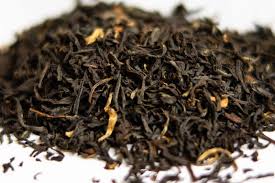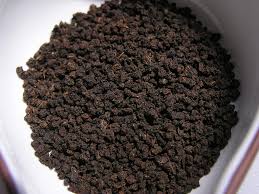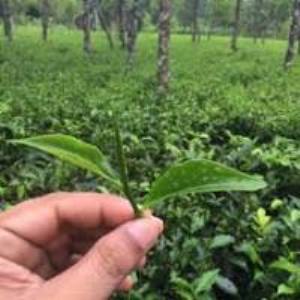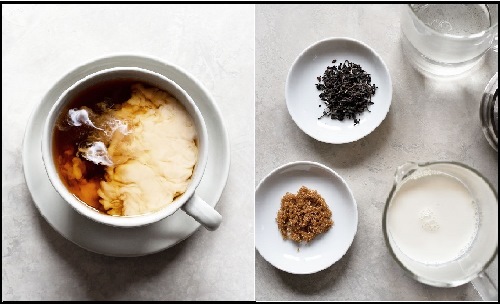Assam Tea

Assam tea is known for its full-bodied malty flavor, deep aroma, rich color, and brisk taste.
What is Assam tea?
Assam tea is a variety of black tea made from the leaves of the plant Camellia sinensis. Assam tea is worldwide famous full-bodied tea with robust flavor produced in the state of Assam in India. It is the largest tea producing area in India, making up to more than 50% of all tea production in the country.
Assam lies along the Brahmaputra River—an area called the Brahmaputra Valley in northeast India, bordering Bangladesh and Myanmar. The tea here is grown at sea level, in a warm, wet climate. The tropical climate of the region is responsible for earthy and malty flavour, with a smooth buttery and creamy overtone. The tea is well known as Assam black tea, breakfast tea, English breakfast tea.
The Flavour of Assam Black Tea
Assam tea is a particular type of black tea that’s well known for its rich, malty flavor and many potential health benefits. There are two kinds Assam tea: Orthodox and CTC both named after the manufacturing process used to create them.
Basic |
Orthodox Tea |
CTC Tea |
|
What |
Orthodox tea refers to loose leaf tea produced using traditional methods, which involves plucking, withering, rolling, oxidation/fermentation and drying. |
CTC (Crush, Tear, and Curl) is a method of processing black tea in which tea leaves are passed through a series of cylindrical rollers with serrated blades that crush, tear, and curl the tea into small, even-shaped pellets. |
|
Intent of production |
Orthodox tea production focuses on preserving the singular virtues of the leaf resulting in fermented tea leaves |
CTC is about ensuring faster production of a standard quality of tea. |
|
Tools and methods of production |
While orthodox tea makers use traditional practices during their tea manufacturing process, which can be time-consuming and require a lot of human intervention |
CTC tea manufacturing process is a faster way of producing a standard quality of tea. |
|
The flavor profile of the tea |
Orthodox teas produce more authentic tea experience. Orthodox blends of all types – oolong, white, green or black – have a delicate flavor. |
CTC teas have a generic taste and produces dark, strong liquor have a distinct astringent flavor. If you want to have masala chai or want to add milk to tea, then CTC is the best. |
|
Image |
 |
 |
Harvest and Processing
Due to the climate, tea leaves are harvested twice a year. The two harvests are referred to as the first and second flush.
- Spring Flush (Or First Flush): The first harvest begins in March and can run until mid-May. Small leaves and buds are harvested during this flush. First flush Assam is considered lower quality and less desirable.
- Summer Flush (Or Second Flush): The second harvest begins in mid-May. Tea from this harvest is known as “tippy”, because the leaves have golden tips. They brew to a sweeter, darker and more full-bodied tea that is more prized than first flush tea.
|
S.no |
Process Name |
How it done |
Related Images |
|
1 |
PLUCKING |
1. Tea leaves
are plucked fresh very early in the morning when
there are the dew drops on the leaves. |
|
|
2 |
WITHERING |
1 - Withering
process is commenced where the humid content of
the leaves is reduced by about 30 % in order to
make them soft and flexible for the subsequent
rolling. |
|
|
3 |
Rolling OR CTC |
1 - The
withering green leaves are rolled in large rolling
machines. |
|
|
4 |
Fermentation |
1 - The
fermentation is an oxidation and tanning process
of the cell fluids, which have been released
during the rolling. |
|
|
5 |
Drying |
1 - The
fermentation is finished when the desired grade of
fermentation. |
|
|
6 |
Sorting |
1 - The black
tea, which is released by the dryer, is raw
tea. |
|
TEA GRADES PRODUCED IN ASSAM
The most important phases of the treatment with respect to orthodox tea production are: withering, rolling, fermenting, drying and sorting into leaf and broken grades, i.e. sizes. Tea suppliers in Assam have tea grades that include the whole leaf, broken leaf, fanning, and dust tea grades.
- SFTGFOP - S (Super) F (Finest) T (Tippy) G (Golden) F (Flowery) O (Orange) P (Pekoe)- large leaf
- FP - F (Flowery) P (Pekoe) - small leaf
- GFBOP - G (Golden) F (Flowery) B (Broken) O (Orange) P (Pekoe) - fine broken
- BOPF - B (Broken) O (Orange) P (Pekoe) F (Fanning) - fanning
- CTC - C (Crushing) T (Tearing) C (Curling) - round leaf
Craft
House









